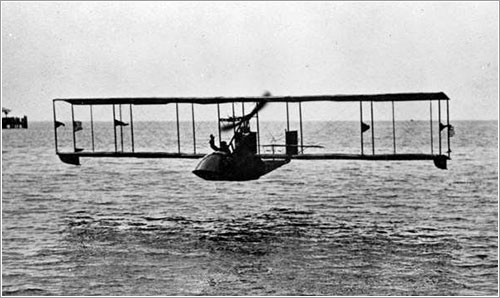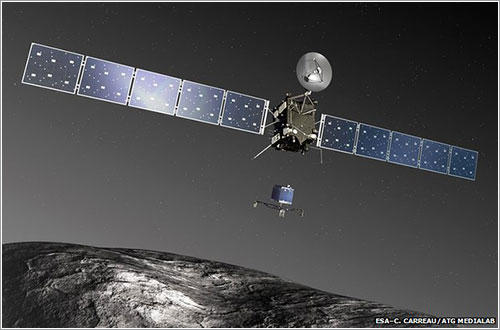
Total Pageviews
Wednesday, 1 January 2014
Plex website relaunches as Plex.tv, one-stop home for all of its media streaming abilities

Use This Tool to Check if Your Snapchat Account Was Compromised

How The Quantified Life Can Help You Achieve Your New Year’s Resolutions

New Year’s wellness resolutions are like prom night: a lot of hype, even more promises, and a disappointing follow-through. A paltry 19 percent of wannabe health nuts follow through with their annual resolutions, according to University of Scranton Professor John Norcross.
The quickest way to dissolve your hardened commitments into a bowl of disappointed Jell-O is to set a course without clear goals and constant improvement. This is where technology and a dash of the scientific method can help.
Instead of relying on fragmented web advice and our own fragile intuition, “quantified self” is all about treating self-improvement with the rigor of an academic laboratory: make singular adjustments, chart progress, and cumulate learnings.
Quantified self can get sort of extreme; I’ve done things with my body that should neither see sunlight nor be talked about in public. Fortunately, cheaper gadgets, diagnosis startups, and web tools have opened up the “quantified self” movement to everyday consumers who just want to save time and feel a little sexier in front of the mirror.
So, here’s how to super-charge your New Year’s resolutions with science.
Set The Right Metrics

First thing first: you need the right numbers. For instance, “weight loss” is a silly path to sexy, sexy abs, since you’ll probably want to pack on heavy muscle while shedding those love handles. What you actually want is lean body mass.
Instead of a standard scale, splurge on one that measures fat percentage, such as the Withings Smart Body Analyzer. I’ve found that the Withings scale isn’t very accurate for measuring my total body fat percentages, but it’s generally good at measuring changes, which is really what counts in a resolution. Or, if money’s tight and you can dedicate more time, just pick up some skinfold calipers (a handheld clip).
In other words, you want a measure that is as close to your goal as possible. Instead of “going to the gym more,” try “increasing my max squat.” Instead of “walking more,” try “total number of hours active per day” (the Nike Fuelband SE has a nice metric for this one, since sitting all day can counteract scheduled exercise).
This makes nutritional goals difficult, because there’s no good way to measure whether your body is, in fact, absorbing them. Best to stick to performance-minded goals and see if eating healthier helps you meet them.
Set The Baseline And Control Variables

Slow your roll, eager beaver. You don’t need to overcrowd the gym on January 2nd. Instead, baseline your normal activity and abilities for a week. What is your one-mile run? What’s your squat max? How many hours a day are you active? How much are you sleeping? What are you eating?
Personally, I log everything on a Google spreadsheet, but all of the fitness trackers have their own daily logging methods.
Now, make one (one!) significant improvement and see what happens over the next three weeks. Cut out grains (yes, all grains). Set a consistent bedtime. For muscle gain, try bulking up with 0.8 gram of (healthy) protein per pound of body fat per day.
I find that setting experimental results helps me commit, because I know that a single misstep can screw up weeks of effort. If your experiment works, great! If not, there’s something wrong and you need to re-evaluate. But since you only changed one thing, you know what works and what doesn’t.
Avoid broad changes, like “eating healthy.” Instead, try exchanging one of your meals for a salad, but with the same number of calories (olive oil or avocado is a great way to pack in healthy fats).
Health is a marathon, not a sprint.
Look For Patterns And Anomalies

Self-experimentation is more Christopher Columbus and less Pirates of the Caribbean: often the best results are accidental. For instance, I learned that early-morning light was screwing up my last REM sleep cycle after looking over my Zeo sleep headband output (Zeo went belly-up, unfortunately). So, I picked up some blackout blinds.
I also discovered that I could replace coffee with 30 seconds of exercise after I decided to do a quick Crossfit workout one morning after a terrible night’s sleep.
Every body is unique; mulling over your data will help you discover things you never knew helped.
Before the quantified self, I used to be a roller coaster dieter, haphazardly patching together bits of advice. It rarely ever worked. Now, I know what works for my body and what doesn’t. The control has brought sanity to the typical chaos of self-improvement. With a bit of science and some technology, this might be the year that your New Year’s resolutions work.
via TechCrunch » Startups http://feedproxy.google.com/~r/techcrunch/startups/~3/iluTqVzuFBQ/
Engadget Eurocast 050 New Years Edition - 1.1.14

We'll be talking CES 2014 with Gary Shapiro tomorrow, catch our Google Hangout here!

How Will New York City's Tech Industry Fare Under Mayor de Blasio?

Moto G for Verizon now on sale at Best Buy for $100 contract-free

4.6 Million Snapchat Usernames and Phone Numbers Reportedly Leaked

12 Free Web Apps to Boost Your Drawing Skills

Switched On: The 2013 Switchies, Part One

The Need to Be Open: U.S. Laws Are Killing the Future of Robotics

Cien años de aviación comercial

Abram C. Pheil y Tony Jannus sobre la había de Tampa en el primer vuelo comercial de la historia - vía TampaPix
El 1 de enero de 2014 Abram C. Pheil se convirtió en la primera persona de la historia en comprar un billete para un vuelo en avión, un vuelo de 35 kilómetros y 23 minutos de duración que le llevó de San Petersburgo (el de Florida) a Tampa a bordo de un Benoist XIV de la St. Petersburg-Tampa Airboat Line pilotado por Tony Jannus.
La St. Petersburg-Tampa Airboat Line operó apenas unos meses, pero fue la primera demostración de que los aviones tenían una utilidad real como medio de transporte, en especial comparado con las opciones que había en aquel entonces para unir ambas ciudades, un lento viaje en barco, un viaje en tren de cinco horas, o un viaje de muchas horas por carreteras en aquella época sin asfaltar.
No sería hasta 1920 cuando se fundara la primera aerolínea que aún sigue en funcionamiento hoy en día, KLM, con vuelos regulares entre Amsterdam y Londres, ruta que hoy en día sigue en activo.
Claro que las cosas han cambiado un poco en estos cien años y si en el primer año de operaciones de KLM esta transportó 345 pasajeros y unos 25.000 kilos de correo y carga, esta es la carga típica de un 747 en un solo vuelo hoy en día y, según datos de IATA, la Asociación Internacional de Transporte Aéreo:
- Cada día vuela una media de 8 millones de personas, lo que en 2013 supuso un total de 3.100 millones de pasajeros –fue la primera vez que se pasó la marca de los 3.000 millones– y se prevé que para 2014 la cifra alcance los 3.300 millones.
- Cada día se transportan unas 140.000 toneladas de carga cada día, para un total de unos 50 millones de toneladas al año. Su valor es de unos 6.400 billones de dólares, algo así como el 35 por ciento del comercio internacional mundial.
- Esto supone unos 57 millones de puestos de trabajo en todo el mundo y genera unos 2.200 billones de dólares en actividad económica; contando sólo los 540.000 millones que genera directamente esto pondría a la industria de la aviación en el lugar número 19 de las economías del mundo.
- El volumen de negocio de las aerolíneas es de 743.000 millones de dólares, con un margen de beneficio medio del 2,6 por ciento.
Hay más información sobre este aniversario en 100 Years of Commercial Flight | Small World, Big Future ; en Twitter se está conmemorando con la etiqueta #flying100.
via Microsiervos http://www.microsiervos.com/archivo/aerotrastorno/cien-aoos-de-aviacion-comercial.html
Motorola's New Year's resolution is to sell more smartphones, drops unlocked Moto X to $400

6 Apps That Fit Charity Into Your Daily Routine

Bump and Flock file sharing apps shut down this month as devs focus on Google projects

6 Laptop Speakers for Astute Audiophiles

Feliz 2014

Rosetta y Philae, la mision espacial del año
Ahora que muchos de los habitantes de este planeta hemos dejado atrás 2013, que a pesar de que vivamos metidos en una crisis tampoco ha sido tan malo, pues como se puede leer en 2013, sin duda el mejor año de la Historia de la Humanidad y Nueve gráficos sobre el progreso del mundo la esperanza de vida ha subido en todo el mundo, igual que el nivel de educación y de producción de alimentos en África, al mismo tiempo que el número de muertos en guerras o el de delitos alcanzan mínimos históricos, toca saludar a 2014 .
En este año tendremos dos cometas que alcanzarán su perihelio, 17P/Holmes el 27 de marzo y 4P/Faye el 29 de mayo, un eclipse anular de Sol el 29 de abril y otro parcial el 23 octubre, con sus dos eclipses de Luna correspondientes, y así hasta los 101 eventos astronómicos de 2014 que recoge Universe Today.
Está previsto también el lanzamiento de la sonda japonesa Hayabusa 2 rumbo al asteroide 1999 JU3 y el de la primera cápsula Orion de la NASA, aunque en este primer ensayo sin tripulantes a bordo, además de los lanzamientos «de rutina» de naves de carga y tripulaciones a la Estación Espacial Internacional y todo tipo de satélites y nanosatélites, incluyendo el último ATV de la Agencia Espacial Europea.
Pero sin duda la misión espacial del año será la de la sonda Rosetta de la Agencia Espacial Europea, que tiene previsto entrar en órbita alrededor del cometa 67P/Churyumov–Gerasimenko en agosto para seguirlo en su periplo hacia el Sol y poner el aterrizador Philae sobre su superficie, algo que será la primera vez que suceda en la historia.
Un poco menos arriba el Airbus A350 podría entrar en servicio con Qatar Airways si el programa de vuelos de prueba se desarrolla según lo previsto, mientras que el C Series de Bombardier podría hacer lo propio con Swiss, aunque parece más probable que esto suceda en 2015.
De lo del primer vuelo al espacio de Virgin Galactic… Pues mejor esperar a que pase, pero no apostaría nada a que suceda en 2014.
Con los pies ya en la Tierra tocará recordar el inicio de la Primera Guerra Mundial, la guerra que iba a acabar con todas las guerras y que en realidad fue poco más que un entrenamiento para la Segunda Guerra Mundial; en otro orden de cosas, el Canal de Panamá también cumplirá cien años.
También tendremos una cumbre de las Naciones Unidas sobre el clima que previsiblemente no servirá para arreglar nada.
En el campo de la tecnología Apple presentará un nuevo iPhone, Samsung decenas de ellos, seguiremos hablando de la impresión 3D, veremos películas, leeremos libros…
Y en general procuraremos seguir contandoos las cosas que nos entretienen o nos llaman la atención ya sea en Microsiervos propiamente dicho o en alguno de los sitios con los que colaboramos como la sección de ciencia y tecnología de RTVE.es, Trend It Up, el blog de Sony Mobile, o los blogs de Citroën y SEUR.
¡Gracias por leernos, no somos dignos!
2014, por cierto, es el Año Internacional de la Agricultura Familiar y Año Internacional de la Cristalografía para las Naciones Unidas y 13^3-13^2-13^1-13^0, tal y como nos recordaba @alfbiz.
via Microsiervos http://www.microsiervos.com/archivo/general/feliz-2014.html
US judge rules warrantless gadget searches at the border aren't unconstitutional

Snapchat user info database leaks, claims to hold most numbers and usernames

Samsung's new TV remote for 2014 is 80 percent smaller, has touch, voice and gesture control

Security Firm Warns About App That Pays for Unused Text Messages

Netflix is testing multiple new subscription plans, like 3 streams for $9.99
